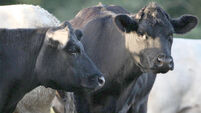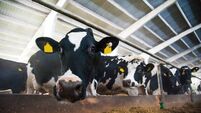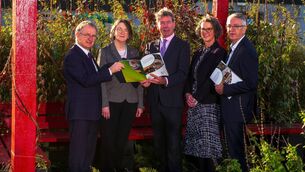GM hot potato passed on
They fear proposals which would allow maize and oilseed rape seed lots to contain up to 0.3% of genetically modified organisms without being labelled - and thus mark the end of consumer freedom of choice.
So far, EU rules allowed for a threshold of 0.9% of accidental presence of GM material.
A decision on new thresholds was expected in September, but has been postponed. So many Europeans are opposed to the spread of GM crops, that outgoing European Commision President Romano Prodi has been accused of trying to avoid a contentious decision, and pass it onto his successor, José Manuel Barroso.
It is a contentious matter because the Brussels decision could effectively tie the hands of national governments which want to protect their traditional farming techniques.
In particular, Poland and other new EU Member states want to avoid what they see as errors made by the "old" EU member states.
"We may produce less than them but our food must be natural and consumer-friendly".
"Only such a policy can help us to uphold small farms and maintain jobs in rural areas", says Polish MEP Janusz Wojciechowski.
There's a similar line of thinking in more than 2,000 European regions which have already declared themselves GM-free zones since 1999.
In these areas, a "separation distance" between genetically modified and non-GM crops will ensure GM-free status, and polluters will be liable if non-GM crops become contaminated. However, anti-GM groups fear that Brussels will allow "contamination of seeds" at a level high enough to make it very hard for farmers to satisfy the overwhelming demand for GM-free food.
A high threshold would also increase the cost of controlling co-existence of GM and non-GM foods, and ultimately result in more expensive food.
The divisiveness of the issue is reflected in the European institutions, with the European Parliament calling for the seeds labelling threshold to be set at a detection level of 0.1%, while some outgoing commissioners favoured the existing 0.9% threshold.
The EU has the toughest rules on GM labelling in the world, but critics of the rules say they do not make sense.
"Two different products will appear on the supermarket shelves. A product derived from GMOs but with no GM material present will be labelled as such, whereas a food product that has GM material present but which is under the threshold will not require a label," according to CIAA, the Confederation which speaks for the €600 billion per year food and drink industries in the EU
And with around 300 genetically modified maize plants and more than 2,000 GM oilseed rape plants now to be allowed on the supposedly GM-free fields in Europe, the confusion is only likely to increase, with more food than ever before likely to be made from some form of GM crop, but with even less likelihood of any mention of genetic modification ever being mentioned on the label, say anti-GM campaigners.










